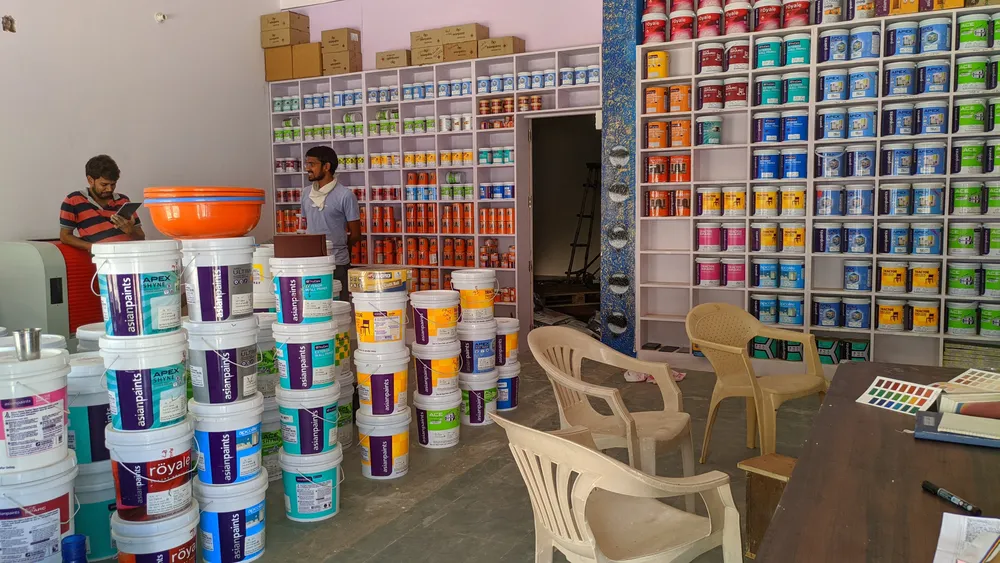Market News
Paint sector outlook 2025: Can giants like Asian Paints survive the rising competition?
.png)
4 min read | Updated on December 31, 2024, 11:39 IST
SUMMARY
The paint sector faces competition and muted revenue growth, but urbanisation, infrastructure projects, and shorter repainting cycles drive long-term growth amid rising costs and market consolidation.

Paint sector outlook 2025: Can giants like Asian Paints survive the rising competition?
Indian paint sector saw a boom post-COVID, but as normalisation is setting in, a shift in the trend can be seen, where big players like Asian Paints' growth rate is slowing down, and relatively smaller players are quite optimistic about their growth prospects.
As we approach 2025, understanding the industry dynamics would be beneficial for investors—let us uncover the growth prospects, demand drivers, and industry challenges.
Rising Competition
Muted Revenue Growth
Revenue growth for long-standing players is muted, remaining in mid-single digits in FY24, and in the first half of FY25, a contraction was seen. The main causes for the slowdown are price cuts (driven by lower raw material costs—reduced revenue per unit) and a shift to lower-value products (which lead to smaller profit margins).
Ultimately, companies face pressure on both revenue growth and profitability.
Margin Pressure from Input Costs
Although recent price hikes of low single digits might help sustain gross margins, they are not enough to offset higher operating expenses.
Dealer Challenges
The ROI (return on investment) is considered weak as of now, which makes dealers hesitant to stock up on inventory. However, companies are adapting to support dealer ROI.
What Are the Growth Drivers?
After discussing headwinds, there are long-term tailwinds that cannot be overlooked in this temporary environment.
- Urbanisation and Rising Disposable Incomes: Rising disposable income in urban areas bodes well for the decorative paints category.
- Shorter Repainting Cycles: Homeowners paint their houses more often, which boosts sales.
- Rural and Semi-Urban Recovery: Better rural earnings, thanks to good rains, should increase paint sales in these regions.
- Infrastructure and Affordable Housing Projects: State spending on homes and infrastructure will increase demand for both decorative and industrial paints.
- Automobile Sector Growth: A growing car market should lead to more industrial paint sales.
Asian Paints: Losing market share
Asian Paints, the industry leader with over 50% market share, has recently faced some setbacks—its market share has fluctuated by around 1.5%. To understand this, we must analyze the ongoing industry trends.
The paint industry is quite broad, and currently, the industrial paint segment is outperforming the decorative segment. In a subdued demand environment, the industrial segment is comparatively performing well.
According to Asian Paints' management, the industrial segment contributes 6% to their overall business, whereas, for other companies, it ranges between 20%-45%. Companies with a stronghold in the industrial segment appear to have gained overall market share. Efforts are being made for consumers to upgrade to premium products. However, rising costs and intensified competition have placed pressure on the company's overall performance.
Market Consolidation:
In tough times, generally, only the big players survive due to their size. The higher the volume, the lower the cost. Smaller companies might struggle to compete (except those with differentiated products) or could be acquired.
Mergers and Acquisitions:
The sector may witness more consolidation as companies aim to strengthen their market position.
Recently, the paint industry has been undergoing consolidation as smaller players face challenges, creating opportunities for larger companies like Asian Paints. CEO Amit Syngle (Asian Paints) views this as a natural progression in a fragmented market and sees potential for acquisitions that align with the company’s growth strategy.
He mentioned that while it’s too early to predict specific developments, parts of Dutch giant Akzo Nobel’s India portfolio could be of interest if they are divested. Syngle emphasised that Asian Paints would evaluate such opportunities based on the contours of the divestment, showcasing their readiness to strengthen their position amid industry changes.
Long-Term Growth Potential
While the near term might see moderate growth, the sector’s long-term prospects remain robust, supported by strong demand drivers and government initiatives.
Companies that can adapt to the evolving competitive landscape, innovate, and manage costs effectively are likely to emerge stronger. For stakeholders, understanding these dynamics will be key to uncovering the opportunities and challenges of this vibrant sector in 2025 and beyond.
About The Author
Next Story

